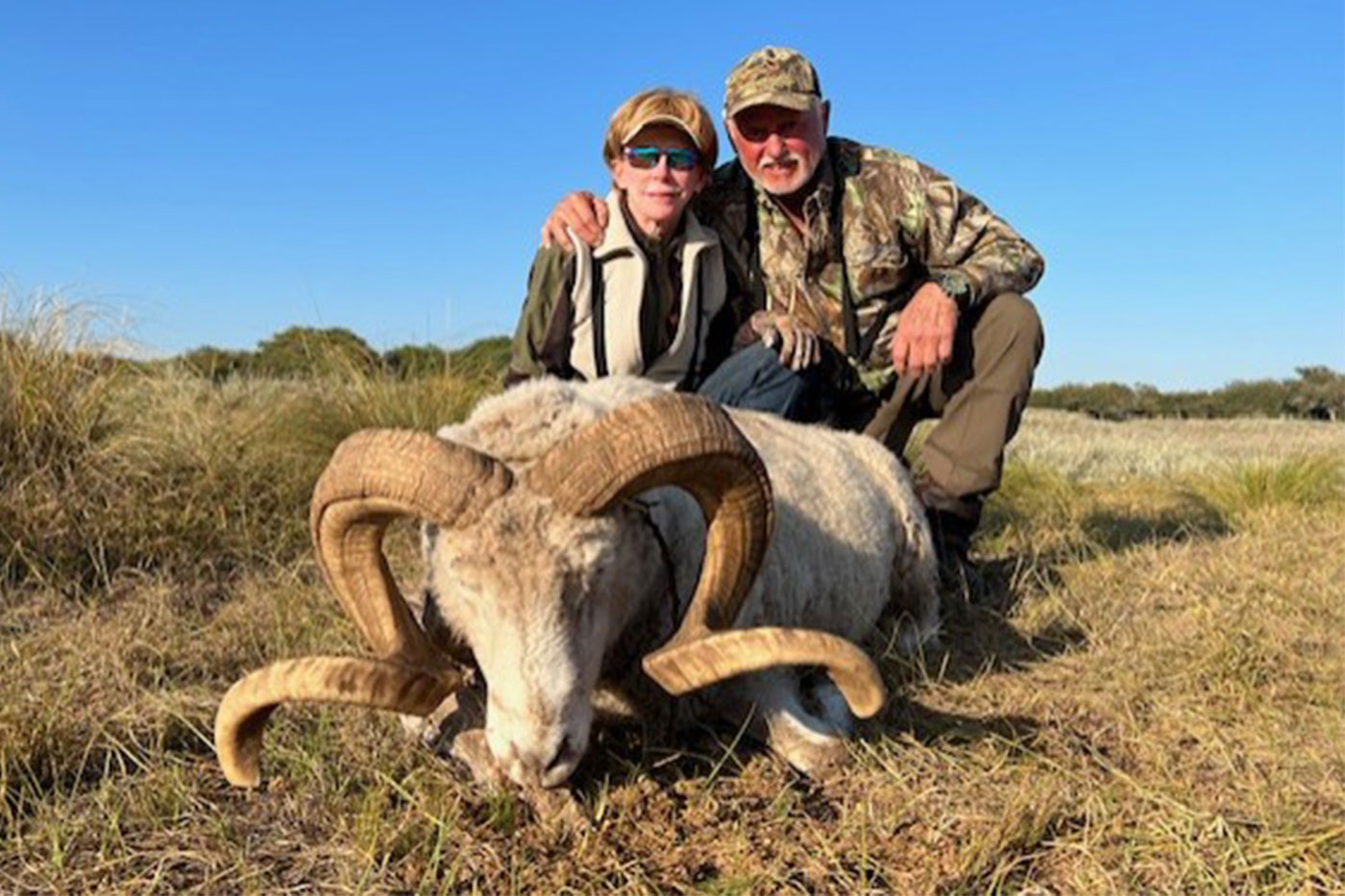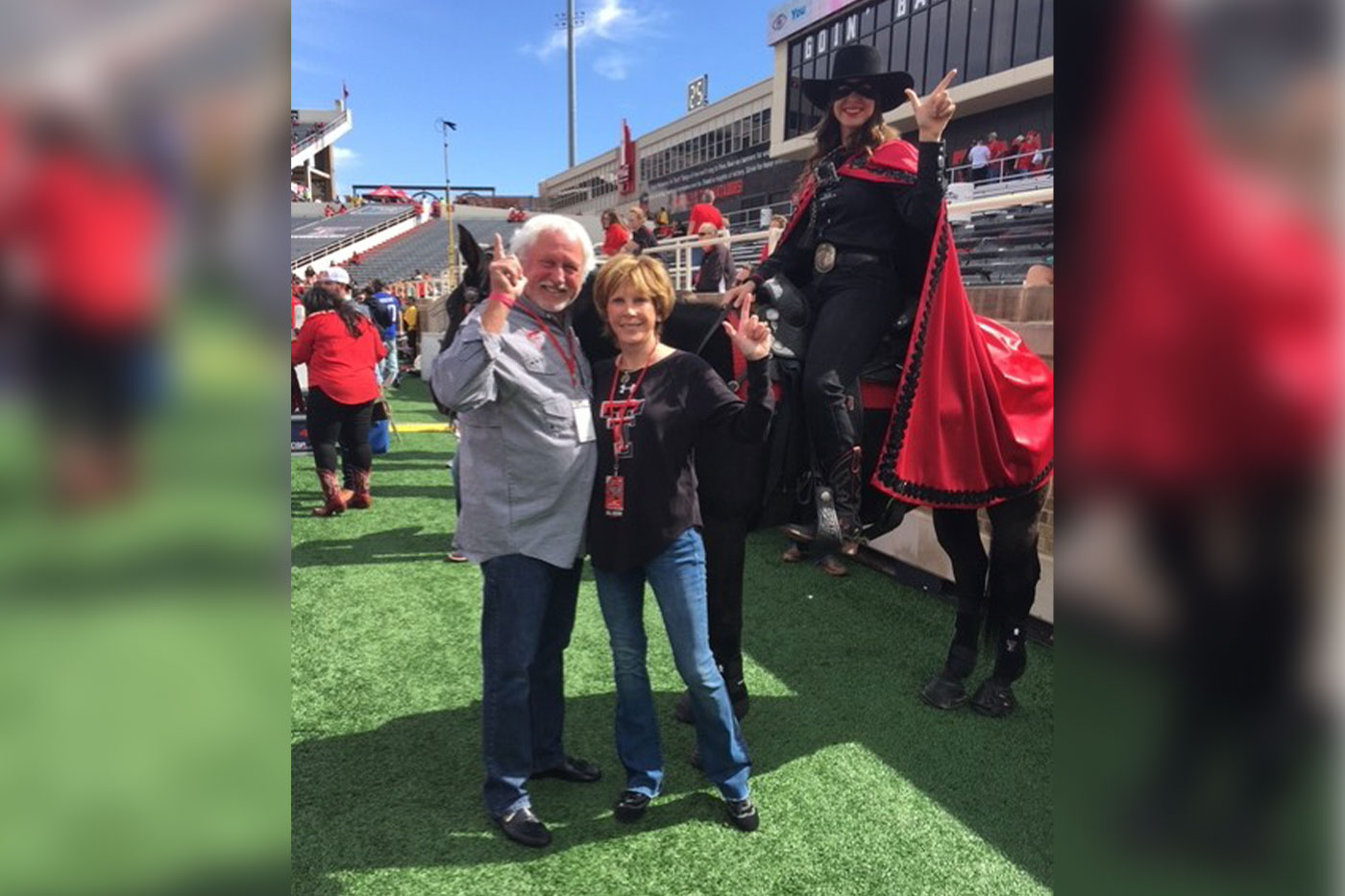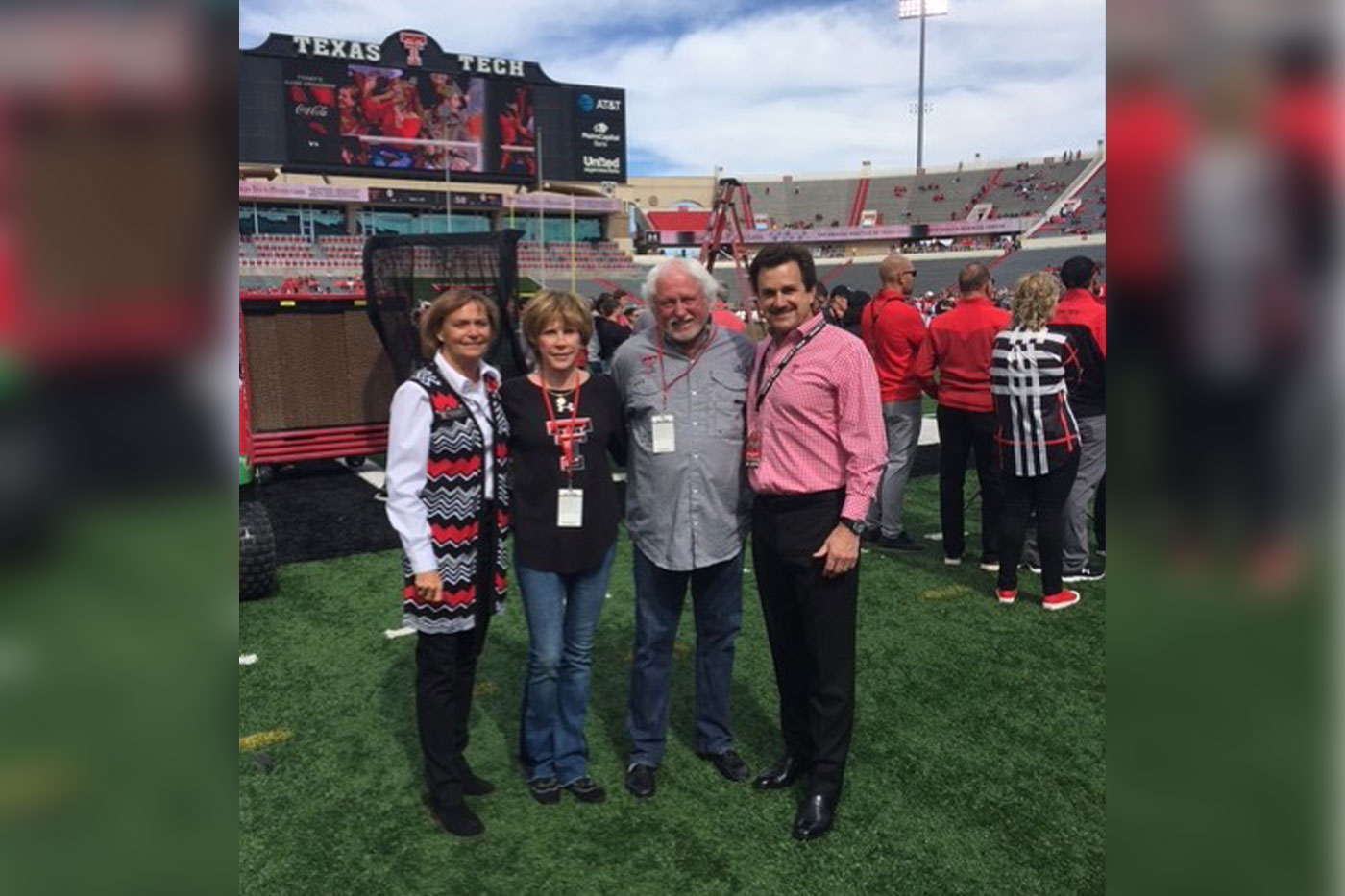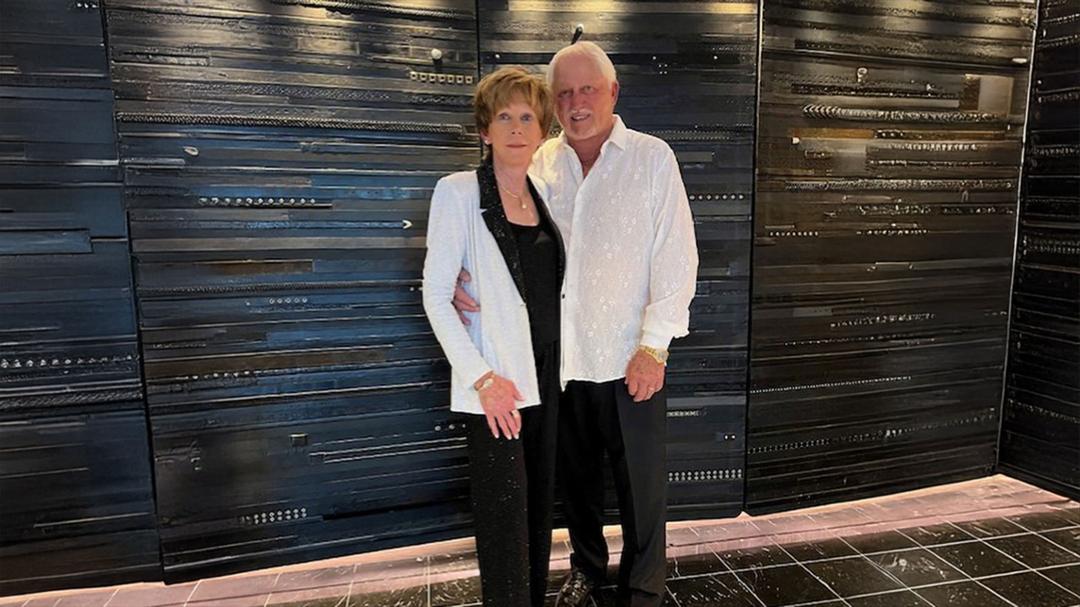Jan and Raymond Patschke are applying their fundamental principles of entrepreneurial success to their estate plan, which aims to transform lives and create a lasting legacy.
If you looked up the word “entrepreneurship” in the dictionary, it would be no surprise to see a photo of Jan and Raymond Patschke next to it.
The couple has dabbled in their fair share of business ventures, from jewelry, Yellow Page advertising and hair salons to ranches, real estate and oil and gas.
While their entrepreneurial endeavors may have been varied, a select four components were crucial to their success in each pursuit: recognizing opportunities, working hard and making sacrifices, improving the business, and, perhaps most importantly, having a solid exit plan.
“That’s something that we have always believed in,” Raymond said. “Whenever you start something, you need to have an exit plan. Before we had any money coming in, we needed to know how do you develop a business where you have a model that you can sell at some point. We said, ‘What do we need to do to accomplish our goals and what is our exit plan?’”
Now, the couple is asking the same questions, albeit in a different venture. Through a philanthropic lens, they are using estate planning to establish an exit plan, reflecting on what they want to accomplish and the legacy they wish to leave behind.
Recognizing Opportunities
Jan (Ludgren) Patschke, an Austin native, graduated from Texas Tech University’s Jerry S. Rawls College of Business in 1973 with her bachelor’s degree in marketing before starting her first job for John-Roberts Inc., a college ring company based in Austin.
Jan began as a customer service representative, then moved into telephone sales support for college bookstores. She was subsequently promoted to a sales representative for college ring bookstores in Iowa and Wisconsin.
Knowing she did not particularly want to move to the Midwest, Jan started to explore other sales jobs in Texas. She met a great guy, Raymond, a Sam Houston State University graduate who worked for Southwestern Bell Yellow Pages (SWBYP) in Austin, and he helped connect her with an opportunity at the company. Jan began her career as a sales representative for SWBYP in 1975.
Jan and Raymond began dating shortly after and got married in September 1976. During the 12 years they worked for the company, they formed a formidable sales power couple.
Jan earned multiple awards for outstanding sales performance through her many years at SWBYP. Raymond also garnered numerous sales performance awards and was selected by the Communications Workers of America union in 1986 to negotiate the 1987 agreement.
The Patschkes acknowledged that the negotiations for the 1987 agreement were complex. However, what seemed like a setback on the surface became a catalyst for their most ambitious entrepreneurial venture.
“The company was committed to cutting the income for the sales reps, and we needed to figure out what we were going to do if they were going to be successful with that,” Jan said with a frown. “Which they ended up doing. And so, we decided to leave and start our own National Yellow Page agency, and it was called Fox Advertising.”
Working Hard and Making Sacrifices
In 1987, Fox Advertising, Inc., joined a small group of agencies licensed by the Yellow Pages publishers to represent them with national advertisers. Traditionally, a company with multiple locations seeking to advertise in the Yellow Pages would have to contact a different sales representative from each region or Yellow Pages company to place ads for every one of their locations.
Jan and Raymond brought their extensive training and knowledge from the local market to the national level. With a single call to Fox Advertising, any company could have its advertising campaign for each location placed in all the appropriate directories on its behalf.
“We explored what it would take to start a national agency and said, ‘This is very, very risky, but we’re willing to take the chance,’” Raymond said, nodding his head. “We knew it was going to take a lot of money to get it going.”
The Patschkes had some money set aside for capital funding, but they knew their nest egg was not going to be sufficient. They sold their nicer vehicles and traded them for an older car while Raymond drove his old hunting jeep for a time. They also took out second liens on their rental properties.
Jan and Raymond were committed to doing whatever it took to launch their business. They worked out of their home, soliciting clients, selling and designing ads during the day and researching companies and ads in different Yellow Pages at night.
Eighteen appeared to be the magic number for Fox Advertising. Given the onboarding, development and billing processes required for taking on a client, they recognized that it would likely take 18 months for the company to turn a profit once they secured their first national client.
Furthermore, as their business grew, they stalled just before reaching their 18th client.
“We were just stuck at 17,” Jan said. “I remember thinking, ‘We have got to break this thing.’ Because we were struggling.”
She was right, because momentum truly began to shift when they reached client number 18. Two years into their venture, in 1989, the Patschkes moved their business out of their home and into an office building they leased in their neighborhood and were able to start hiring staff.
“When we had to move (the business) out of the house because it was rounding the corner and going into our bedroom, we knew we were going to make it,” Jan said with a chuckle.
“Make it” might be too marginal a term for what happened over the next 10 years.
In the following decade, Fox Advertising would grow beyond what Jan or Raymond ever envisioned. They had established themselves in a building they owned, managing regional and national advertisements for approximately 150 to 160 clients in the U.S. Canada and Mexico.
In the late ’90s, the print business was on the downshift, the dot-com bubble was on the rise and the couple began to see signs that it was time to execute their exit plan.
During this time, Raymond served on the national board of the Association of Directory Marketing, where he connected with representatives and owners of similar companies. Through this organization, they met and began discussing a merger in February 1999 with TMP Worldwide, which was, at that time, the largest Yellow Pages agency in the world and owner of Monster.com.
They finalized the deal in August 1999 without losing any employees or clients during the transition. The company that acquired their business attempted to digitize the Yellow Pages, but unfortunately, was unsuccessful.
“The people who stayed in that old business model, they all went under,” Raymond acknowledged. “It’s just the old-whip-and-buggy business, and it had its time. It was fabulous, but it was over. We got out at the right moment and were very fortunate to have that happen for us. Timing was everything for us.”
Improving the Business
After selling Fox Advertising, Jan and Raymond enjoyed what they called a “gentle transition into retirement.” They traveled between their homes in Austin and Ruidoso, New Mexico, picking up hobbies like golfing and hunting, and even traveling around the world.

However, at only 49 and 54, respectively, they knew they were not quite ready to quit putting their business acumen to good use. In the years since, the couple has invested in various ventures. They purchased a chain of hair salons in Austin, Great Haircuts, which they expanded for 16 years and sold just before the COVID-19 pandemic. They have also made several investments in ranches, strip malls, oil and gas, and other real estate pursuits over the past 25 years.
“We have a history of entrepreneurship,” Raymond began. “It is a lot of fun for both of us to take something from nothing, develop a multimillion-dollar business or property and then be able to sell it and reap good rewards. All the while, having an established exit plan in place.”
“So when we semi-retired when we sold Fox Advertising back in 1999, we took that energy and diverted it to developing things,” Jan continued. “So, we’d buy the ranches, go in there, work on them, and fix them up.”
Jan equated the feeling of seeing their businesses grow and prosper to the satisfaction of a freshly mowed lawn.
“We all like instant gratification, but that’s not what this is,” she said. “It takes work. It’s like mowing a yard. You look at it; it looks rough, but you spend time and work cleaning it up and making it better and then an hour later, it looks fabulous. But that’s something that we’ve really been enjoying doing. We like taking something and making it better, improving it.”
Having a Solid Exit Plan
The same foundational concepts that enabled Jan and Raymond to achieve entrepreneurial success are now the methods they are using to plan the legacy they want to leave behind.
Due to their focus on careers, they decided early in their marriage not to have children. Therefore, when it came to estate planning, they needed to determine what would happen to their assets and began seriously discussing this topic about 10 years ago.
“After our successes, we’ve always been proactive about our estate,” Jan said. “We asked ourselves, ‘What do we want to do? What is our legacy going to be? What can we do to make a difference?’
“We realized that all throughout, our interest has been in developing people; we like helping people be better at what they do. And because we didn’t have kids, we thought it would be really great if we were able to help a lot of kids. And so how do you do that? That’s when we started thinking about our universities.”
They had their attorney contact Texas Tech and Sam Houston State University, and both schools replied. However, Jan and Raymond wanted to learn more about the universities and the colleges before donating, including where their money would go and how it would be used. They generally wished to be more involved before making such a monumental decision.
One of the ways Jan accomplished this was by being invited to become a member of the Rawls College Advisory Council, where alumni serve as members and ambassadors in their areas of influence. Through this experience, she has had the opportunity to work closely with the dean, faculty, alumni and current students, playing an integral role in ensuring Rawls College continues to offer high-impact educational experiences.
“The advisory council brings businesspeople out there in the world together with the (college) leadership of the training for these professionals that the businesses are going to hire,” Jan said. “It brings both perspectives to the table in the same room. I’ve learned so much about the business school, how it operates and what it’s doing for the students. Relationships develop within the advisory council and the administration, (the dean) and so on. And you’re sharing ideas from each other’s worlds.”


After making this connection to the university and learning more about Rawls College, the Patschkes established the Jan and Raymond Patschke Scholarship with a current-use gift in 2018. A current-use gift is non-endowed, paid in full and for immediate use. The Jan and Raymond Patschke Scholarship supports students in Rawls College with a preference for marketing majors like Jan and first-generation students like Raymond.
They continued making current-use gifts to this fund annually from 2018 to 2022. As they learned more about Rawls College and Texas Tech, this served as a way for them to confirm their decision to include the university in their estate plan.
“Our goal was to, at the bare minimum, do a $25,000 endowed scholarship,” Jan said. “But we were doing this in steps because, once again, we were checking things out to make sure that this was a path that we definitely wanted to dedicate ourselves to. The key thing was that it was going to help people who wanted to go to school but maybe didn’t have all the funds that they needed.”
As Jan and Raymond spent more time at the university, they were impressed by Rawls College, its students, the faculty and the leadership. They had arrived at their decision.
In 2023, they established the Jan and Raymond Patschke Scholarship Endowment with a $25,000 gift. By creating this endowment, they ensured that the fund would endure for posterity, providing scholarships for generations to come.
Then, in 2024, they finalized their estate plan with Texas Tech, making an extraordinarily generous $8 million planned gift to Rawls College that will be divided into three funds: the Jan and Raymond Patschke Scholarship Endowment, the Jan L. and Raymond A. Patschke Operating Endowment, and the Jan L. and Raymond A. Patschke Deanship. The Patschkes anticipate their planned gift will have grown in value by the time their assets are distributed to Texas Tech.
“Jan and Raymond are both astute businesspeople, have worked in so many different lines of business and seem to have an incredibly perceptive sense of when to enter and exit a business,” said Margaret L. Williams, dean of Rawls College. “We are enriched by our relationship with the Patschkes, and they are excellent examples and mentors for our students. It is incredibly humbling and rewarding that great, generous people of that caliber believe in Rawls College, our leadership and our students.”
While scholarships had long been a priority for the couple, the relationships they built with Rawls College staff and leadership helped guide their decision to establish an operating endowment and a deanship.
“We asked what the school needed, not what we needed as much, but what the school needed,” Raymond said. “We trusted them to help us make these decisions.”
The Jan L. and Raymond A. Patschke Operating Endowment will enable Rawls College to pursue strategic priorities now and those that will emerge in the future, addressing areas of need that leadership may not currently be able to envision.
“It gives us the flexibility to allocate funds to the greatest need or the most important strategic initiative at any given time,” Williams said. “If we’re looking at an endowment that we expect to be in place 50, 100 years from now, we can’t even anticipate those needs. Right now, we’re looking at developing degrees emphasizing AI. Who would have thought of that even five years ago, let alone 10, 20, 100 years ago? So that flexibility is so important.”
A unique aspect of the Patschkes’ gift is the Jan L. and Raymond A. Patschke Deanship, which, when realized, will be the university’s first deanship. Not only does a deanship provide a foundation for innovation and excellence, but it will also enable the university, in perpetuity, to recruit and retain the most talented and competitive candidates for that position; a goal of the couple who created the fund, reflecting the manner in which they operated their own businesses.
“We went back to what was important to us as a business,” Raymond said. “We wanted to make sure that Texas Tech had significant funds to hire the very best person they could afford. That is the way we run our businesses, and that’s the way we wanted Texas Tech to have the opportunity.”
With their gift, Jan and Raymond answered their questions, “What do we want to do? What is our legacy going to be? What can we do to make a difference?” using the same pillars that guided them throughout their lives.
The couple recognized an opportunity to give back at Texas Tech and put in the hard work and sacrifice to understand the university and determine if this was truly where they wanted to invest their money. They collaborated with leadership to identify the best areas where their investment could enhance the lives of others and developed an exit plan.
“We’re trying to make sure we’ve got an exit plan for when we leave this world,” Jan said. “Because we’ve been very blessed, and we believe that we will be able to help in a much bigger way. It feels really good to be able to know that we’ll be able to do this. We hope that we’ll be able to do this while we’re still alive, but life has a way of doing its thing, and we can make the commitment through our estate.”

